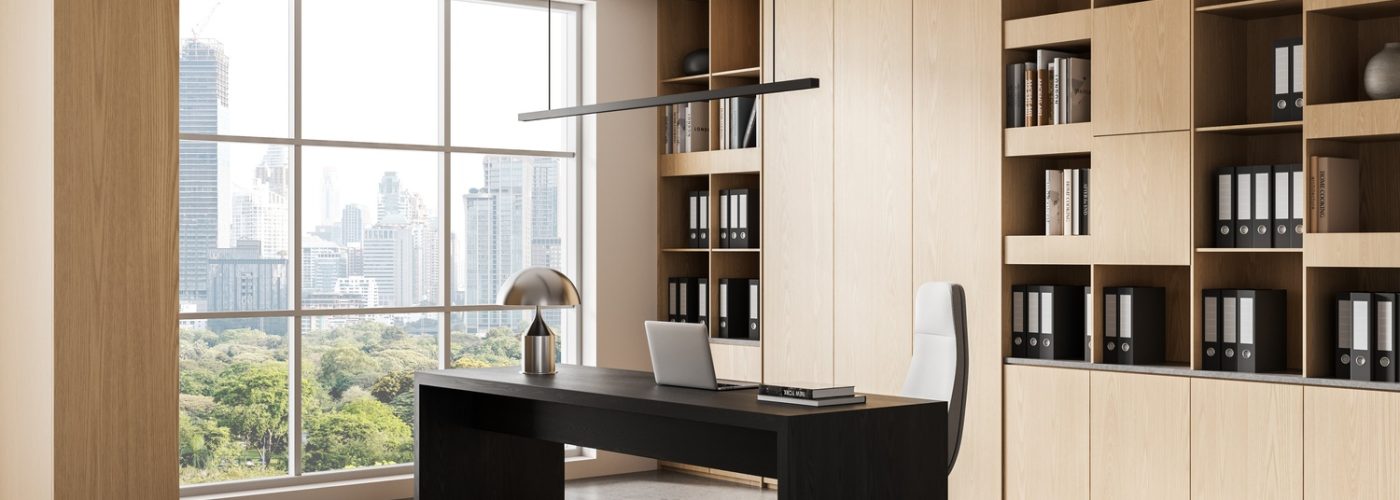An organized workspace supports faster decision-making and smoother routines. When supplies and documents have a designated place, employees spend less time searching and more time completing tasks. The link between storage systems and workflow efficiency might seem simple, but the way storage is planned, chosen, and used affects how effectively people move through their day. A few thoughtful storage choices can reduce clutter, lower stress, and make any office operate more predictably.
The Foundation of a Functional Workspace
A productive office relies on practical office furniture storage. The best office storage solutions help create structure without overcomplicating routines. They reduce visual distractions and make shared environments easier to manage. Filing cabinets, for instance, provide an orderly way to separate client records, tax files, and reference materials. When documents are logically labeled and easy to retrieve, employees avoid unnecessary interruptions and maintain steady focus.
Some teams rely on a combination of options, including office cabinets and file drawers, to manage varying types of information. Lockable units safeguard sensitive materials while open shelving allows for quick access to general resources.
Reducing Physical and Mental Clutter
A cluttered environment slows workflow and drains attention. Floating shelves and wall-mounted file organizers offer storage for office spaces while keeping surfaces free. These fixtures make often-used items visible but tidy. The same idea applies to storage carts that roll between work areas. They give flexibility to move tools or office supplies where they are needed without crowding desks.
Keeping the physical layout clear also helps mental clarity. People tend to process information faster when their surroundings are simple and predictable. Clean surfaces, minimal obstacles, and visible order send a subtle message that tasks can progress smoothly.
Integrating Storage into the Office Layout
Storage works best when it’s built into how people move through an office. Thoughtful placement matters more than sheer quantity. A set of wall-mounted cabinetry near office desks, for example, keeps everyday reference items within reach. Modular storage cubes can define pathways between office workstations, guiding movement while holding shared materials.
In common spaces, storage choices influence collaboration. A storage ottoman in a break area doubles as extra seating and a quick drop zone for reading materials. Standard lockers positioned near entryways make personal storage straightforward, reducing the buildup of personal items on desks. Space planning that accounts for these details supports smooth traffic flow and makes tidying up routine instead of effortful.
Aligning Storage with Work Habits
Every office has distinct rhythms. Teams that handle paper records need dependable filing cabinets and file drawers, while digital-heavy teams might prioritize cable management and device charging zones. Built-in bookcases suit offices where printed materials remain essential. In design-focused settings, wall-mounted cabinetry and corner shelves display samples or portfolios without crowding work tables.
The same logic extends to shared meeting areas. Conference tables stay cleaner when nearby cabinets hold markers, cords, and adapters. Organizational tools keep these essentials ready without cluttering the tabletop. A small shift like this saves setup time for every meeting, reducing cumulative interruptions throughout the week.
Blending Comfort and Productivity
Storage choices also influence the overall work atmosphere. Furniture arrangement affects posture, movement, and even team communication. A mix of executive chairs, functional office desks, and supportive office furniture helps define zones for focus or conversation. When storage elements complement those zones, transitions between tasks feel more natural.
In open-plan offices, low shelving or modular partitions can frame office cubicles while keeping sightlines open. In smaller rooms or home-based setups, compact furniture paired with corner shelves or floating units maintains comfort without sacrificing space optimization. Effective layouts allow employees to shift easily between quiet concentration and group work.

Extending Order Beyond the Desk
Organization does not stop at individual workstations. Shared tools and materials need consistent systems. Storage carts stationed near printers or supply points simplify restocking. Labeling sections for specific items prevents duplication and waste. This level of order builds a sense of reliability, which often translates into smoother teamwork.
Even home office storage setups benefit from similar thinking. When people set up home office decor with integrated storage, such as built-in bookcases or small cabinets, they create an environment that separates work from personal life. The ability to close drawers or cabinets at the end of the day offers a psychological boundary that supports rest and recovery.
Conclusion
Efficient storage turns an office into a space that works with its people, not against them. Purposeful choices (filing systems that fit real tasks, shelves that keep tools visible, and furniture that defines space) lead to measurable gains in focus and time management. Whether a workplace seats fifty people or one, storage remains an overlooked engine of productivity. Order makes routines simpler, reduces friction in daily work, and keeps energy directed toward meaningful tasks rather than misplaced items.





